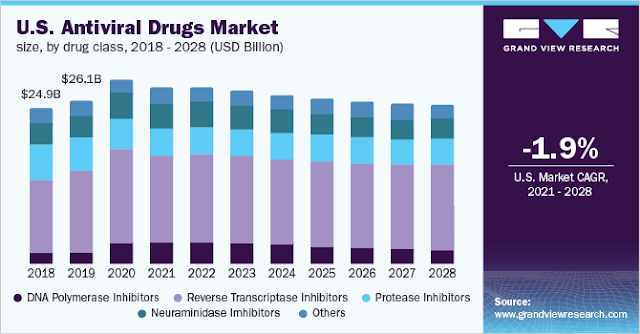The global biofertilizers market size is projected to reach USD 2.70 billion by 2027, expanding at a CAGR of 12.8%, according to a new report by Grand View Research, Inc. Rising demand for organically produced food products across emerging economies backed with growing economic stability is the key boost to the marketspace.
Organic food products are naturally-derived without utilizing any food additives or synthetic chemicals. Key contributors to the organic food market include organically produced meat and dairy products, organically cultivated fruits and vegetables, and naturally-derived beverages, which include both alcoholic as well as non-alcoholic beverages. Growing consumer preference for healthy eating habits globally coupled with rising disposable income levels of individuals in the emerging economies of Asia Pacific, including Indonesia, Japan, India, and Thailand, is projected to boost the demand for organic food and beverage products in the region.
 |
| Biofertilizers Market |
Further, according to the Research Institute of Organic Agriculture, number of organic farmers has grown significantly since 2000 due to the constant efforts undertaken by government agencies and agricultural and environmental authorities globally. The government to raise awareness about the benefits of switching to organic harvesting and incentives to promote sustainable farming practices. The largest market for organic food retail sales in 2017 and 2018 was the U.S. followed by Germany, France, China, and Italy, respectively. Growing acceptance of organic-based farming techniques and consumer inclination toward organic food are anticipated to drive the demand for organic fertilizers in the foreseeable future.
Yet another key driver for development of the market is the increased focus on environmental sustainability, which would result in reduced consumption of petroleum-based products and a shift to bio-based alternatives. Carbon footprint of greenhouse gas emission is one of the major hazards associated with the manufacturing of chemicals from crude oil. The use of biofertilizers is bound to minimize carbon footprints significantly in due course and is, therefore, being highly promoted by key regulatory authorities worldwide. Biofertilizer production emits significantly lower CO2, which makes them increasingly popular in the developed regions of North America and Europe.
Biofertilizers Market Report Highlights
• North America accounted for the largest market share of 32.6%, in terms of revenue, in 2019 and is projected to grow at a volumetric rate of 12.3% from 2020 to 2027
• Nitrogen fixing biofertilizers are observed to reflect heavy growth in terms of consumption with a CAGR of 12.1% from 2020 to 2027 on account of widespread demand generation from North American and European agricultural communities to boost yield of various cereals
• Among the various crop types, cereals & grains captured a significant market with global biofertilizer consumption share of 76.4%. This was majorly due to heavy demand for wheat from various Asian and Latin American countries such as Thailand, Singapore, India, Brazil, and Argentina.
Fertilizer Industry Size was valued at 201.3 Million Tons in 2021 and is projected to expand at a CAGR of 1.2% during 2022 to 2030.
Biofertilizers Market Segmentation
Grand View Research has segmented the global biofertilizers market on the basis of product, application, crop type, and region:
Biofertilizers Product Outlook (Volume, Kilotons; Revenue, USD Million, 2016 - 2027)
• Nitrogen Fixing
• Phosphate Solubilizing
• Others
Biofertilizers Application Outlook (Volume, Kilotons; Revenue, USD Million, 2016 - 2027)
• Seed Treatment
• Soil Treatment
Biofertilizers Crop Type Outlook (Volume, Kilotons; Revenue, USD Million, 2016 - 2027)
• Cereals & Grains
• Oilseeds & Pulses
• Fruits & Vegetables
• Others
Biofertilizers Regional Outlook (Volume, Kilotons; Revenue, USD Million, 2016 - 2027)
• North America
• Europe
• Asia Pacific
• Latin America
• Middle East & Africa
List of Key Players of Biofertilizers Market
• CBF China Biofertilizers
• Lallemand Inc.
• Novozymes A/S
• Fertilizers USA LLC
• AgriLife
• Symborg SL
Request free sample copy of Fertilizer Industry Data Book @ https://www.grandviewresearch.com/sector-report/fertilizer-industry-data-book/request/rs1




%20Terminal%20Industry%20ESG.png)

